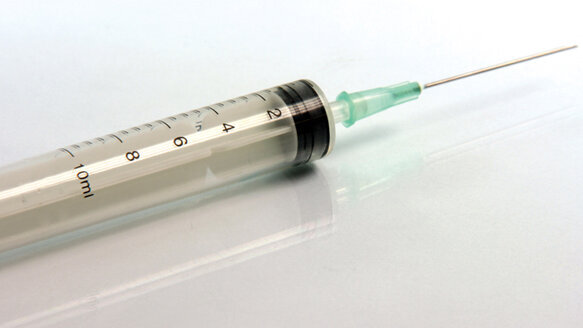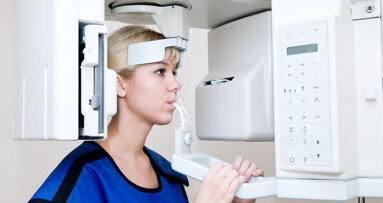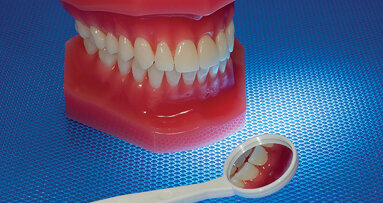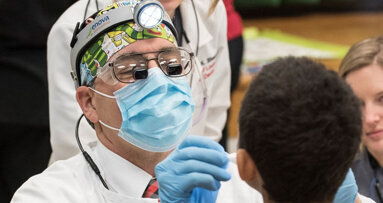NEW YORK, N.Y., USA: Local anesthetics have played an important role in the evolution of modern dentistry. While their use has made many dental procedures commonplace, they do come with risks. Methemoglobinemia, a condition that affects oxygen levels in the blood, can result from injections of some local anesthetics. High levels can pose a risk to children in particular.
The journal Anesthesia Progress reports results of a study measuring methemoglobin levels following the use of two injectable local anesthetics. Study subjects were 90 children from 3 to 6 years old who were undergoing dental rehabilitation under general anesthesia. They were randomly assigned to one of three groups — one using 4 percent prilocaine plain, one using 2 percent lidocaine with 1:100,000 epinephrine, and one with no local anesthetic.
Methemoglobin is a form of hemoglobin in which ferrous (iron) ions oxidize to become ferric ions, ultimately causing less oxygen to be transported and released to the body’s peripheral tissues. While methemoglobin normally makes up 1 to 2 percent of a person’s hemoglobin, higher percentages can cause problems. As methemoglobin levels progressively increase, symptoms can range from skin discoloration to headache, fatigue, dizziness, seizures, and coma.
The current study measured and compared maximum methemoglobin levels reached and the length of time it took to reach these peaks. The group treated with prilocaine showed significantly higher maximum methemoglobin levels. Those treated with the lidocaine and epinephrine combination did not experience methemoglobin levels any greater than the group given no local anesthetic. There was a notable difference in the time taken to reach peak levels. The group that did not receive a local anesthetic displayed peak levels in about a half hour while the other groups were about an hour into the procedure before peak levels occurred.
While most dental clinicians are aware that methemoglobin can be induced by specific dental local anesthetics, they may not be as knowledgeable of the levels and toxic manifestations that can occur. Dental clinicians treating pediatric patients should be particularly vigilant of dosing guidelines that can help ensure the patient’s safety.
The full text of “Methemoglobin Levels in Generally Anesthetized Pediatric Dental Patients Receiving Prilocaine Versus Lidocaine” and other articles is available in Anesthesia Progress, Vol. 60, No. 3, 2013, located at www.anesthesiaprogress.org/doi/full/10.2344/0003-3006-60.3.99.
(Source: Anesthesia Progress)
NEW HAVEN, Conn., USA: In the largest case-control study to date, researchers have investigated the correlation between benign brain tumors and dental ...
BALTIMORE, US: Alpha-gal syndrome is a delayed allergic reaction to a specific carbohydrate molecule found in mammalian meat and certain medical products ...
NEWPORT BEACH, Calif., USA: New research conducted on behalf of the Oral Cancer Foundation has found that many Americans are unaware of the fact that the ...
NEW YORK, N.Y., USA: Study results published recently in the Journal of Dental Research demonstrate — possibly for the first time — the role ...
BOSTON, US: During the pandemic, the majority of dental professionals had to cease their dental activities in order to slow down the spread of COVID-19. The...
LEIPZIG, Germany: Rural communities across the US are facing a growing oral health crisis as access to fluoridated water and dental care diminishes. This ...
WASHINGTON, US: In recent years, there has been an increase in studies on vaping and its link to oral and overall health. Adding to existing research, a new...
CHARLOTTE, N.C., USA: The America’s ToothFairy Smile Drive will be held this February. Students united with America’s ToothFairy national youth ...
LOUISVILLE, Ky., USA: Access to oral health care has increased since 2001, yet more children face urgent dental needs, according to a new study ...
LOS ANGELES, Calif., USA: The UCLA School of Dentistry has received major new funding to help improve the oral health of children in underserved ...
Live webinar
Wed. 14 January 2026
12:00 PM EST (New York)
Dr. Théo Laplane, Dr. Robert Gottlander DDS
Live webinar
Fri. 16 January 2026
12:00 PM EST (New York)
Live webinar
Mon. 19 January 2026
1:00 PM EST (New York)
Philipp Kopp, Michael Seeber
Live webinar
Thu. 22 January 2026
9:00 AM EST (New York)
Prof. Judith Jones D.D.S; M.P.H., Prof. Kakuhiro Fukai D.D.S., Ph.D, Dr. Bathsheba (Bethy) Turton
Live webinar
Thu. 22 January 2026
2:00 PM EST (New York)
Dr. Nicola M. Grande DDS, PhD
Live webinar
Wed. 28 January 2026
8:00 AM EST (New York)
Live webinar
Wed. 28 January 2026
11:00 AM EST (New York)
Prof. Dr. Jan-Frederik Güth



 Austria / Österreich
Austria / Österreich
 Bosnia and Herzegovina / Босна и Херцеговина
Bosnia and Herzegovina / Босна и Херцеговина
 Bulgaria / България
Bulgaria / България
 Croatia / Hrvatska
Croatia / Hrvatska
 Czech Republic & Slovakia / Česká republika & Slovensko
Czech Republic & Slovakia / Česká republika & Slovensko
 France / France
France / France
 Germany / Deutschland
Germany / Deutschland
 Greece / ΕΛΛΑΔΑ
Greece / ΕΛΛΑΔΑ
 Hungary / Hungary
Hungary / Hungary
 Italy / Italia
Italy / Italia
 Netherlands / Nederland
Netherlands / Nederland
 Nordic / Nordic
Nordic / Nordic
 Poland / Polska
Poland / Polska
 Portugal / Portugal
Portugal / Portugal
 Romania & Moldova / România & Moldova
Romania & Moldova / România & Moldova
 Slovenia / Slovenija
Slovenia / Slovenija
 Serbia & Montenegro / Србија и Црна Гора
Serbia & Montenegro / Србија и Црна Гора
 Spain / España
Spain / España
 Switzerland / Schweiz
Switzerland / Schweiz
 Turkey / Türkiye
Turkey / Türkiye
 UK & Ireland / UK & Ireland
UK & Ireland / UK & Ireland
 International / International
International / International
 Brazil / Brasil
Brazil / Brasil
 Canada / Canada
Canada / Canada
 Latin America / Latinoamérica
Latin America / Latinoamérica
 China / 中国
China / 中国
 India / भारत गणराज्य
India / भारत गणराज्य
 Pakistan / Pākistān
Pakistan / Pākistān
 Vietnam / Việt Nam
Vietnam / Việt Nam
 ASEAN / ASEAN
ASEAN / ASEAN
 Israel / מְדִינַת יִשְׂרָאֵל
Israel / מְדִינַת יִשְׂרָאֵל
 Algeria, Morocco & Tunisia / الجزائر والمغرب وتونس
Algeria, Morocco & Tunisia / الجزائر والمغرب وتونس
 Middle East / Middle East
Middle East / Middle East





























































To post a reply please login or register